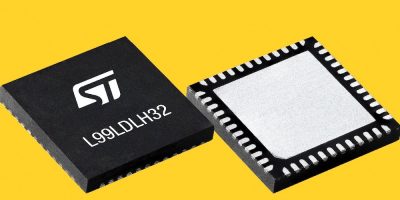Second generation radar transceivers from NXP are now available for ADAS (advanced driver assistance systems) and AD (autonomous driving). The TEF82xx series of 77GHz RFCMOS radar transceivers is optimised for fast chirp modulation, and supports short-, medium- and long-range radar applications, including cascaded high-resolution imaging radar.
It enables 360 degree sensing for critical safety applications, including automated emergency braking, adaptive cruise control, blind-spot monitoring, cross-traffic alert and automated parking.
Radar is used for sensing in passenger vehicles’ ADAS but also in MaaS (mobility as a service) applications, says NXP. Fully autonomous driving will demand higher RF performance for distances beyond 300m, as well as at finer resolutions down to sub-degree level to accurately detect, separate and classify smaller objects. Used with NXP’s scalable family of S32R radar processors, NXP said the TEF82xx RFCMOS radar transceivers are able to deliver the fine angular resolution, processing power, and ranges, required for production-ready imaging radar solutions.
The RFCMOS transceivers have three transmitters, four receivers, ADC conversion, phase rotator and low phase noise VCOs (voltage controlled oscillators). It also includes built-in safety monitors and external interface capability for MIPI-CSI2 and LVDS and complies with ISO26262 and ASIL Level B standards.
NXP has doubled RF performance compared with the first generation devices, with improvements such as a +6dB phase noise improvement, output power of 14dBm at phase noise of -95dBc/Hz and a receiver noise figure of 11.5dB. TEF82xx transceivers use a compact eWLB package with exposed die, which optimises heat transfer to meet demanding thermal conditions, even at elevated ambient temperatures. A particularly short chirp return time of just four microseconds reduces power on time to reduce sensor power consumption. It also allows chirps to be spaced more closely in time which increases speed estimation capabilities.
Developers can easily build and optimise applications using the radar algorithm library offered by the automotive-grade radar software development kit (RSDK) without having to spend time manually fine-tuning accelerator software. There is also a large ecosystem of compilers, development environments, MCALs, and both free and commercial RTOS support.







